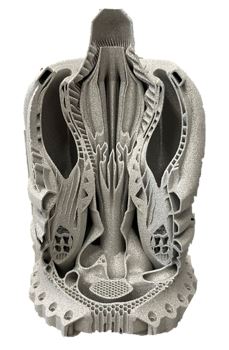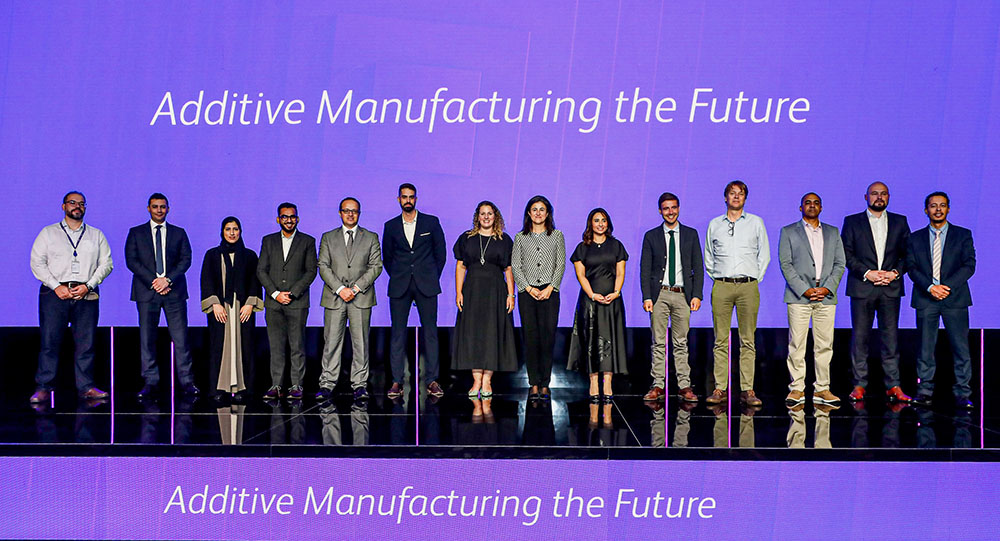The COVID-19 pandemic pushed many countries to seek new ways to navigate the stand-still the world came to for a significant period. The pandemic years also necessitated greater preparedness to deal with any potential future shocks. It became quickly obvious to manufacturers that resilience and agility are as important as efficiency. Additive Manufacturing (AM) is now attracting greater interest than before the pandemic from decision-makers around the globe for its promise of self-sufficiency, among other advantages. AM’s benefits are driving a global impact. The Wohlers Report 2022 highlighted a growth of 19.5% in the AM industry in 2021, compared to 7.5% in 2020. The global AM market is estimated to reach US$76.16 billion by 2030, growing at a CAGR of 20.8% (Businesswire). In the future, both AM and conventional manufacturing are anticipated to play equally significant roles in advancing the industry.
Globally, AM has matured enough for adoption across a plethora of sectors (space, defence, medical, aerospace, automotive, oil & gas, energy, and tooling, to name a few). In the MENA region, there is still some market resistance, especially when it comes to critical applications. Despite investments in infrastructure, there is still limited expertise and talent across the AM workflow. Developing in-house competencies and intellectual property in the field is crucial. Looking at the industrial landscape in the MENA region, one cannot help noticing that the debate is still at ‘AM vs. Subtractive Technologies’, while other parts of the world are now debating ‘AM vs. AM’, or in other words, identifying the specific suitability of one AM technique compared to another. Today, there is limited market adoption of AM throughout the MENA region that goes beyond prototyping (especially for metals) – but the interest is steadily growing. With the intent of bridging this gap, the Technology Innovation Institute (TII), the applied research pillar of Abu Dhabi’s Advanced Technology Research Council (ATRC) established an Additive Manufacturing division within its Advanced Materials Research Centre (AMRC), one of 10 dedicated research centres that contribute significantly to elevating the UAE’s status as a preferred innovation hub.
The mission of the Additive Manufacturing (AM) division is to widen the adoption of AM technologies across the local value chain – factoring in both large and small industry stakeholders through offering competitive and proven manufacturing solutions. With a focus on awareness, understanding, development, and implementation, this division has the vision to become a world-class center of excellence for industry-focused manufacturing R&D.
The AM division includes various aspects of AM within its remit, such as Materials, Processes, Design, and Applications. The ‘Materials’ pillar develops new materials for additive manufacturing techniques (next generation materials), with a focus on metallic materials. The ‘Processes’ pillar is where the team conducts research to develop an in-depth understanding of the AM processes in use, not only for their efficient use today, but also to visualize and prepare for their likely future use cases. AM technologies offer unmatched design freedom and improved performance. The team’s investigations on ‘Design’ capitalize on the findings and recommendations of the Processes and Materials pillars and merge them with the extended design freedom to restructure existing products and improve their functionality/performance. The ‘Applications’ aspect of the division prioritizes the exploitation of AM technologies – and ensures a range of applications that offer freedom and sustainability.
These interconnected focal points make up a significant part of the additive manufacturing workflow – design, modelling, material, process, post-process, product, and end of life. Through the integration of its activities across the four specific pillars, TII’s AM team helps companies/clients throughout their AM journey to address the current challenges: low productivity, high costs, lack of understanding, rapid developments, limited resources, lack of AM-specific materials, surface finishing, process variability, inspection and testing, unfamiliar feedstock and material properties, as well as emerging design opportunities, and a non-existent supply chain.

The Abu Dhabi Industrial Strategy aims to strengthen the emirate’s position as the region’s most competitive industrial hub. Smart, Sustainable, and Made in Abu Dhabi are its three main aspects. Complementing the strategy, ‘Make it in the Emirates’ is a key initiative to encourage the growth of the local manufacturing sector – boosting both self-sufficiency and global trading.
TII’s AM team plays a multifaceted role in adopting and advancing AM technologies across society. AM processes champion sustainability as they ensure the efficient use of resources and minimize waste. This, in turn, leads to efficient use of the earth’s resources and secures a brighter future and resource-rich planet for generations to come. AM promises myriad applications and enduring impact across various sectors, many of which we use in our everyday lives. Improving these will significantly enhance our quality of life. Examples of such innovation include lighter electronic gadgets, custom prosthetics, and security, among others.

AM has enabled a paradigm shift in today’s business models across the globe in terms of speedy decisions, adaptability, agility, complexity, and inclusivity of technologies. The UAE is keenly focused on manufacturing today in line with its strategy to diversify its economy. From a national impact viewpoint, closing the gap and widening the adoption of AM will strengthen the UAE’s position and enhance the global competitiveness of local industries. AM adoption will also ensure greater manufacturing autonomy and further augment the manufacturing ecosystem.
Notably, as part of its commitment to raising awareness about AM, TII organized its first ‘Additive Manufacturing the Future’ seminar in May 2022 where global experts in the field gathered to share insights and best practices. Following up on its success, a second edition will take place in Abu Dhabi on April 27, 2023, convening a consortium of world-renowned AM experts. These events are set to position the UAE on the world map as a leader in AM adoption and applications.
Subscribe to AM Chronicle Newsletter to stay connected: https://bit.ly/3fBZ1mP
Follow us on LinkedIn: https://bit.ly/3IjhrFq
Visit for more interesting content on additive manufacturing: https://amchronicle.com


